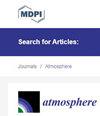Deep Learning Based Calibration Time Reduction for MOS Gas Sensors with Transfer Learning
IF 2.3
4区 地球科学
Q3 ENVIRONMENTAL SCIENCES
引用次数: 5
Abstract
In this study, methods from the field of deep learning are used to calibrate a metal oxide semiconductor (MOS) gas sensor in a complex environment in order to be able to predict a specific gas concentration. Specifically, we want to tackle the problem of long calibration times and the problem of transferring calibrations between sensors, which is a severe challenge for the widespread use of MOS gas sensor systems. Therefore, this contribution aims to significantly diminish those problems by applying transfer learning from the field of deep learning. Within the field of deep learning, transfer learning has become more and more popular. Nowadays, building a model (calibrating a sensor) based on pre-trained models instead of training from scratch is a standard routine. This allows the model to train with inherent information and reach a suitable solution much faster or more accurately. For predicting the gas concentration with a MOS gas sensor operated dynamically using temperature cycling, the calibration time can be significantly reduced for all nine target gases at the ppb level (seven volatile organic compounds plus carbon monoxide and hydrogen). It was possible to reduce the calibration time by up to 93% and still obtain root-mean-squared error (RMSE) values only double the best achieved RMSEs. In order to obtain the best possible transferability, different transfer methods and the influence of different transfer data sets for training were investigated. Finally, transfer learning based on neural networks is compared to a global calibration model based on feature extraction, selection, and regression to place the results in the context of already existing work.基于深度学习的MOS气体传感器迁移学习缩短校准时间
在这项研究中,深度学习领域的方法被用于在复杂环境中校准金属氧化物半导体(MOS)气体传感器,以便能够预测特定的气体浓度。具体而言,我们希望解决校准时间长的问题和在传感器之间传输校准的问题,这对MOS气体传感器系统的广泛使用是一个严峻的挑战。因此,这一贡献旨在通过应用深度学习领域的迁移学习来显著减少这些问题。在深度学习领域,迁移学习越来越受欢迎。如今,基于预先训练的模型构建模型(校准传感器)而不是从头开始训练是一种标准的做法。这使得模型能够利用固有信息进行训练,并更快或更准确地找到合适的解决方案。为了用使用温度循环动态操作的MOS气体传感器预测气体浓度,可以显著减少ppb水平下所有九种目标气体(七种挥发性有机化合物加上一氧化碳和氢气)的校准时间。可以将校准时间减少93%,并且仍然可以获得仅为最佳RMSE两倍的均方根误差(RMSE)值。为了获得最佳的可转移性,研究了不同的转移方法以及不同转移数据集对训练的影响。最后,将基于神经网络的迁移学习与基于特征提取、选择和回归的全局校准模型进行比较,以将结果放在现有工作的背景下。
本文章由计算机程序翻译,如有差异,请以英文原文为准。
求助全文
约1分钟内获得全文
求助全文
来源期刊

Atmosphere
METEOROLOGY & ATMOSPHERIC SCIENCES-
CiteScore
4.60
自引率
13.80%
发文量
1769
审稿时长
1 months
期刊介绍:
Atmosphere (ISSN 2073-4433) is an international and cross-disciplinary scholarly journal of scientific studies related to the atmosphere. It publishes reviews, regular research papers, communications and short notes, and there is no restriction on the length of the papers. Our aim is to encourage scientists to publish their experimental and theoretical research in as much detail as possible. Full experimental and/or methodical details must be provided for research articles.
 求助内容:
求助内容: 应助结果提醒方式:
应助结果提醒方式:


